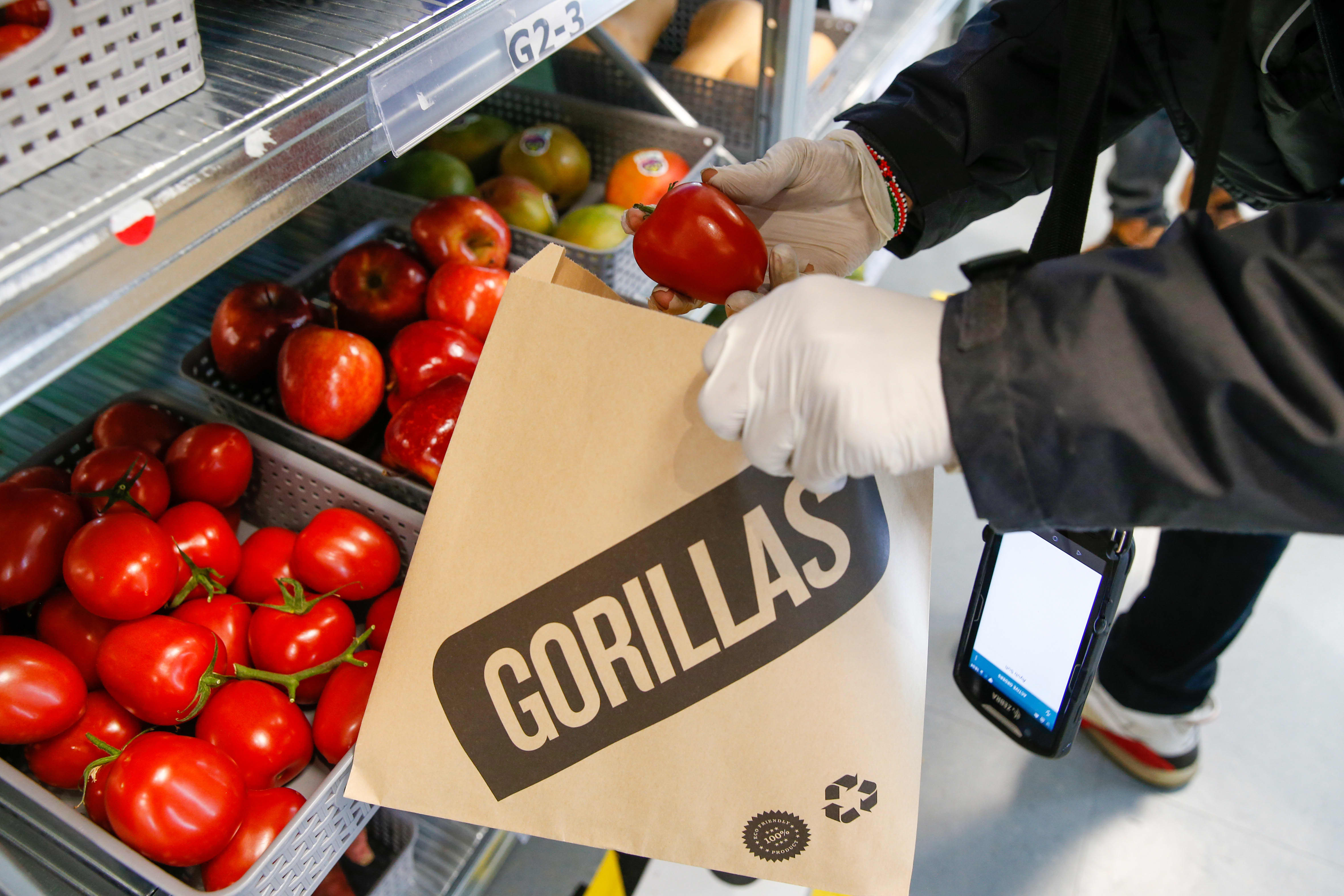Products You May Like
LONDON — A battle to find space powering the ultrafast grocery delivery boom is pushing up rents in parts of London’s commercial property sector.
Companies like Getir, Gorillas and Zapp, which promise to ship essential goods to people’s doors in a matter of minutes, have swept across the U.K. capital this year.
Such services rely on so-called “dark stores,” small warehouses used to prepare online grocery orders for delivery. Similar to dark kitchens in the world of food delivery, these facilities don’t serve customers in-store.
Real estate agents say they’ve seen average commercial rents climb in prime London locations thanks to an influx of demand from rapid grocery delivery firms.
In West London, prime rents for small industrial units of about 20,000 square feet rose to £35 ($46) per sq ft in the third quarter of 2021, up 75% from the same period a year ago, according to figures shared by estate agents Knight Frank.
A similar picture is emerging in East London, with average rents for small industrial properties climbing to £25 per sq ft in the third quarter, up 47% year-over-year.
The Covid-19 pandemic had already “accelerated the industrial and logistics market by five years” thanks to a resulting boom in demand for online shopping, Tom Kennedy, an associate at Knight Frank, told CNBC.
The rise of dark supermarket companies in 2021 has contributed significantly to price pressures in London, he added. “They’ve hit our industrial market hugely in that inner-city zone, which in turn has increased the rents massively.
“It’s a big arms race for space, and there’s only certain areas in London that work for them. So that, in turn, has created bidding wars as well.”
Another real estate company, Savills, said it was seeing a similar trend. Demand for properties spanning more than 500,000 sq ft has waned this year, according to a presentation shared by the firm, while take-up of facilities under 200,000 sq ft has spiked.
Notably, Amazon has increased its take-up of sub-200,000 sq ft buildings by 64% in the past year, Savills said, showing that rapid grocery apps aren’t the only players impacting the market.
“They are one part of the sector. They are a force within it. But I wouldn’t say they’re the driving force,” Toby Green, director of Savills’ industrial and logistics team, told CNBC.
He said other sectors driving up demand include data centers, dark kitchens and parcel delivery.
Still, Green thinks rapid delivery players are having an impact. He says they’re “creating an extra layer of demand,” and that some firms are even willing to pay a higher price for “last-mile” facilities focused on speedy shipping.
“It’s a slightly opaque market,” Green said. “There will be less transparency in the deals. There will be one-off deals. They will be prepared to pay a larger per-sq-ft rate to get a certain facility in a certain location.”
Industry executives and investors say that “hyper localization” is key to success in the quick grocery delivery market. Companies are racing to occupy space that’s as close to their customers as possible.
“We think it is a fundamental trend that is based on consumer behavior,” Andrew Gershfeld, a partner at Flint Capital who’s invested in London grocery app Jiffy, told CNBC.
Investors in rapid grocery apps say they’re cheaper to run than traditional stores since they take up less space, don’t need customers to enter in-person and have better insights into their inventory.
“The cost of real estate is truly a rounding error,” Alberto Menolascina, head of U.K. at instant grocery delivery firm Gopuff, told CNBC. “If you think of the revenue that can be generated on a per-site basis, real estate is never really the big cost.”
But the costs can add up quickly. Many rapid grocery services treat couriers as salaried workers, for example, unlike “gig economy” platforms such as Deliveroo which designates them as independent contractors with less benefits.
“The main problem for dark store services right now is [they need] to decrease their picking time and packaging time for orders,” Andrey Podgornov, CEO and co-founder of retail tech firm Qvalon, told CNBC.
The companies also need to buy stock from wholesalers to fill up their inventories. Inflation in commercial rents could further add to the dark store firms’ cost pressures.
Rapid delivery firms “tend to start off in cheaper areas,” said John Mercer, global head of research for analysis firm Coresight, “but then once they move into more affluent areas, they obviously need to pay up the real estate.”
“As companies do attempt to move into more premium spaces and cities, they have to pay more for the real estate they take.”
Rising inflation has been the story of 2021 for investors, who worry the global economy may be overheating as demand for services ripped higher after countries wound back Covid-19 restrictions.
The logistics market was already experiencing tightness due to supply chain disruptions, Green said. Post-lockdown, demand for smaller industrial units is now “stronger than ever.”
